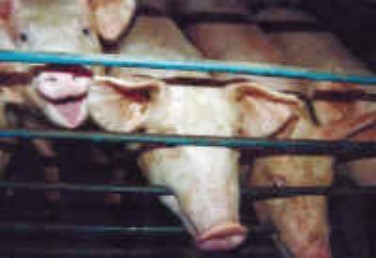Source(google.com.pk)
Help Animal Abuse Biography
The maltreatment of animals, usually pets, may occur in homes where there is domestic violence yet we have limited information about the prevalence of such maltreatment. We surveyed the largest shelter for women who are battered in forty-nine states and the District of Columbia. Shelters were selected if they provided overnight facilities and programs or services for children. Ninety-six percent of the shelters responded and analysis revealed that it is common for shelters to serve women and children who talk about pet abuse. However, only a minority of respondents indicated that they systematically ask about pet maltreatment in their intake interview. We discuss the implications of these results for domestic violence programs, animal welfare organizations, and programs serving children of women who are battered by their partners.
"A moment later Francine heard Nicky scream...'Nicky was crying so hard she couldn't talk. I'd never heard a child cry like that. I ... held her in my arms until she calmed down enough to tell me what had happened. Mickey [Francine's husband] had warned her that if he found the cat on the porch he'd wring its neck. When he caught her with it the second time he took it out of her arms and just broke its neck in his two hands'."
"Francine Hughes was charged with the death by fire of her husband, Mickey Hughes, in 1977.")
"[Her lawyer] asked Francine to tell the story of their pet dog, Lady. As Francine described Lady's death [Mickey had refused to allow his family to assist Lady while she was giving birth] a shockwave of emotion swept the courtroom. The simplicity of the event—a helpless animal, a female, left outside to freeze while struggling to give birth—held no ambiguity, no shadings of motive; it left no room for doubt. The impact of the story was as strong as anything Francine had told so far."
domestic violence, cruelty to animals, child maltreatmentAlthough an age-old issue, the relation between the abuse and maltreatment of nonhuman animals and human interpersonal violence is receiving renewed attention from the scientific community. Two recent reviews of literature (Arkow, 1996; Ascione, 1993) highlight the potential confluence of child maltreatment, domestic violence, and animal maltreatment as shown in the diagram in Figure I which illustrates how each form of abuse can occur independently or in combination with other forms of violence.
The present study is the outgrowth of a series of projects specifically examining the dynamics of human-perpetrated violence toward animals (herein used to refer to nonhuman animals). Following a brief overview of related literature, we report the results of a national survey of shelters for women who are battered conducted to assess shelters' experience with reported animal maltreatment and whether shelters systematically assess this form of abuse. We conclude with discussion of policy and therapeutic issues that need to be addressed as animal welfare organizations and domestic violence programs embark on more collaborative efforts to deal with violence toward animals and people.
An earlier paper (Ascione, 1993) outlined a series of issues that pertain to the development of cruelty toward animals in childhood and adolescence, using the following definition of cruelty: "...socially unacceptable behavior that intentionally causes unnecessary pain, suffering, or distress to and/or death of an animal..." (p. 228). Case examples from the early psychoanalytic literature were reviewed as well as primarily retrospective research from forensic psychiatry and sociology linking childhood histories of animal abuse with contemporary patterns of criminal violence. One of the watershed events for research in this area was the inclusion of "cruelty to animals" among the symptoms of Conduct Disorder in children and adolescents in major psychiatric diagnostic manuals (American Psychiatric Association, 1987; 1994). Conduct Disorder represents a pattern of antisocial behavior that can persist into adulthood.
Research examples included the association of animal maltreatment with cases of child physical abuse, the sexual abuse of children, and partner battering or domestic violence. Follow-up work by colleagues and the present authors has included the design and field testing of a questionnaire for assessing children and adolescents' histories of animal abuse (Ascione, Thompson, & Black, in press) and a survey on animal maltreatment for use with women who have been battered (Ascione, in press; Ascione & Weber, 1995)
Since this review, there has been a number of publications attempting to raise the consciousness of the child welfare community (Boat, 1995) and the veterinary profession (Arkow, 1994; Munro, 1996) about the need to attend to the maltreatment of animals. However, similar advances are only beginning within the community of professionals who deal with domestic violence.









Help Animal Abuse Biography
The maltreatment of animals, usually pets, may occur in homes where there is domestic violence yet we have limited information about the prevalence of such maltreatment. We surveyed the largest shelter for women who are battered in forty-nine states and the District of Columbia. Shelters were selected if they provided overnight facilities and programs or services for children. Ninety-six percent of the shelters responded and analysis revealed that it is common for shelters to serve women and children who talk about pet abuse. However, only a minority of respondents indicated that they systematically ask about pet maltreatment in their intake interview. We discuss the implications of these results for domestic violence programs, animal welfare organizations, and programs serving children of women who are battered by their partners.
"A moment later Francine heard Nicky scream...'Nicky was crying so hard she couldn't talk. I'd never heard a child cry like that. I ... held her in my arms until she calmed down enough to tell me what had happened. Mickey [Francine's husband] had warned her that if he found the cat on the porch he'd wring its neck. When he caught her with it the second time he took it out of her arms and just broke its neck in his two hands'."
"Francine Hughes was charged with the death by fire of her husband, Mickey Hughes, in 1977.")
"[Her lawyer] asked Francine to tell the story of their pet dog, Lady. As Francine described Lady's death [Mickey had refused to allow his family to assist Lady while she was giving birth] a shockwave of emotion swept the courtroom. The simplicity of the event—a helpless animal, a female, left outside to freeze while struggling to give birth—held no ambiguity, no shadings of motive; it left no room for doubt. The impact of the story was as strong as anything Francine had told so far."
domestic violence, cruelty to animals, child maltreatmentAlthough an age-old issue, the relation between the abuse and maltreatment of nonhuman animals and human interpersonal violence is receiving renewed attention from the scientific community. Two recent reviews of literature (Arkow, 1996; Ascione, 1993) highlight the potential confluence of child maltreatment, domestic violence, and animal maltreatment as shown in the diagram in Figure I which illustrates how each form of abuse can occur independently or in combination with other forms of violence.
The present study is the outgrowth of a series of projects specifically examining the dynamics of human-perpetrated violence toward animals (herein used to refer to nonhuman animals). Following a brief overview of related literature, we report the results of a national survey of shelters for women who are battered conducted to assess shelters' experience with reported animal maltreatment and whether shelters systematically assess this form of abuse. We conclude with discussion of policy and therapeutic issues that need to be addressed as animal welfare organizations and domestic violence programs embark on more collaborative efforts to deal with violence toward animals and people.
An earlier paper (Ascione, 1993) outlined a series of issues that pertain to the development of cruelty toward animals in childhood and adolescence, using the following definition of cruelty: "...socially unacceptable behavior that intentionally causes unnecessary pain, suffering, or distress to and/or death of an animal..." (p. 228). Case examples from the early psychoanalytic literature were reviewed as well as primarily retrospective research from forensic psychiatry and sociology linking childhood histories of animal abuse with contemporary patterns of criminal violence. One of the watershed events for research in this area was the inclusion of "cruelty to animals" among the symptoms of Conduct Disorder in children and adolescents in major psychiatric diagnostic manuals (American Psychiatric Association, 1987; 1994). Conduct Disorder represents a pattern of antisocial behavior that can persist into adulthood.
Research examples included the association of animal maltreatment with cases of child physical abuse, the sexual abuse of children, and partner battering or domestic violence. Follow-up work by colleagues and the present authors has included the design and field testing of a questionnaire for assessing children and adolescents' histories of animal abuse (Ascione, Thompson, & Black, in press) and a survey on animal maltreatment for use with women who have been battered (Ascione, in press; Ascione & Weber, 1995)
Since this review, there has been a number of publications attempting to raise the consciousness of the child welfare community (Boat, 1995) and the veterinary profession (Arkow, 1994; Munro, 1996) about the need to attend to the maltreatment of animals. However, similar advances are only beginning within the community of professionals who deal with domestic violence.
Help Animal Abuse

Help Animal Abuse

Help Animal Abuse


Help Animal Abuse

Help Animal Abuse

Help Animal Abuse
Help Animal Abuse

Help Animal Abuse

Help Animal Abuse

Help Animal Abuse
Help Animal Abuse
No comments:
Post a Comment